
Apamea is a genus of moths in the family Noctuidae first described by Ferdinand Ochsenheimer in 1816.
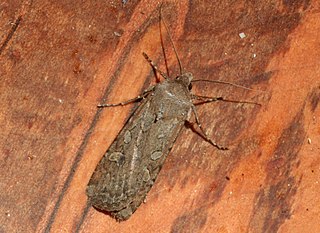
The army cutworm is the immature form of Euxoa auxiliaris. The adult moth is called a "miller moth" because of the fine scales on its wings that rub off easily and remind people of the dusty flour that covers the clothing of a miller.
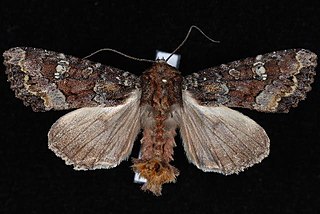
Apamea amputatrix, the yellow-headed cutworm, is a moth of the family Noctuidae. It is found in most of North America, north to the Arctic.

Apamea commoda, the southern Quaker, is a moth of the family Noctuidae. The species was first described by Francis Walker in 1857. It is native to North America, where it is distributed from Nova Scotia west across southern Canada to southern British Columbia, north to Alaska and Yukon Territory, and south at least into Manitoba.
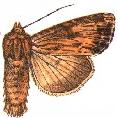
Apamea lignicolora, the wood-coloured Quaker or wood-coloured apamea, is a moth of the family Noctuidae. The species was first described by Achille Guenée in 1852. It is native to North America, where it is distributed across much of Canada and the United States.
Apamea sora is a moth of the family Noctuidae. It is found in western North America, where it is distributed across the Pacific Northwest to the Alaska Panhandle and east to the Rocky Mountains of Alberta.
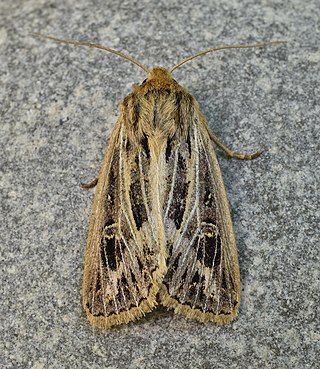
Apamea niveivenosa, the snowy-veined apamea, is a moth of the family Noctuidae. The species was first described by Augustus Radcliffe Grote in 1879. It is native to northern North America, where it can be found across Canada and south to California.
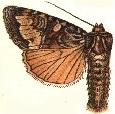
Apamea occidens, the western apamea, is a moth of the family Noctuidae. The species was first described by Augustus Radcliffe Grote in 1878. It is native to western North America as far east as Alberta and Kansas.

Apamea plutonia, the dusky Quaker or dusky apamea, is a moth of the family Noctuidae. The species was first described by Augustus Radcliffe Grote in 1883. It is native to northern North America, where it occurs across the boreal regions, with some occurrences from as far south as New Mexico and Pennsylvania.

Apamea scoparia is a moth of the family Noctuidae first described by Kauri Mikkola, Tomas Mustelin and J. Donald Lafontaine in 2000. It is one of the most common and widespread North American Apamea, being distributed from Newfoundland and Labrador to Alaska and British Columbia, and south to California and Arizona.

Apamea zeta is a moth of the family Noctuidae. It has a Holarctic distribution, and can be found throughout the Northern Hemisphere. It occurs throughout Europe and the northern half of North America.

Apamea indocilis, the ignorant apamea, is a moth of the family Noctuidae. It is native to North America, where it is distributed throughout southern Canada and the northern United States. In the east its range extends from Newfoundland to South Carolina. In the west it occurs as far south as San Francisco Bay and in the Rocky Mountains to New Mexico.

Euxoa detersa, the rubbed dart, sandhill cutworm or sand cutworm, is a moth of the family Noctuidae. The species was first described by Francis Walker in 1856. It is found in North America from Newfoundland to North Carolina, west to Nebraska, north to Alberta and the Northwest Territories.

Apamea quinteri is a species of cutworm or dart moth in the family Noctuidae. It is found in North America.
Apamea atrosuffusa is a species of cutworm or dart moth in the family Noctuidae first described by William Barnes and James Halliday McDunnough in 1913. It is found in North America.
Apamea tahoeensis is a species of cutworm or dart moth in the family Noctuidae. It is found in North America.
Apamea relicina is a species of cutworm or dart moth in the family Noctuidae. It is found in North America.
Apamea siskiyou is a species of cutworm or dart moth in the family Noctuidae. It is found in North America.










